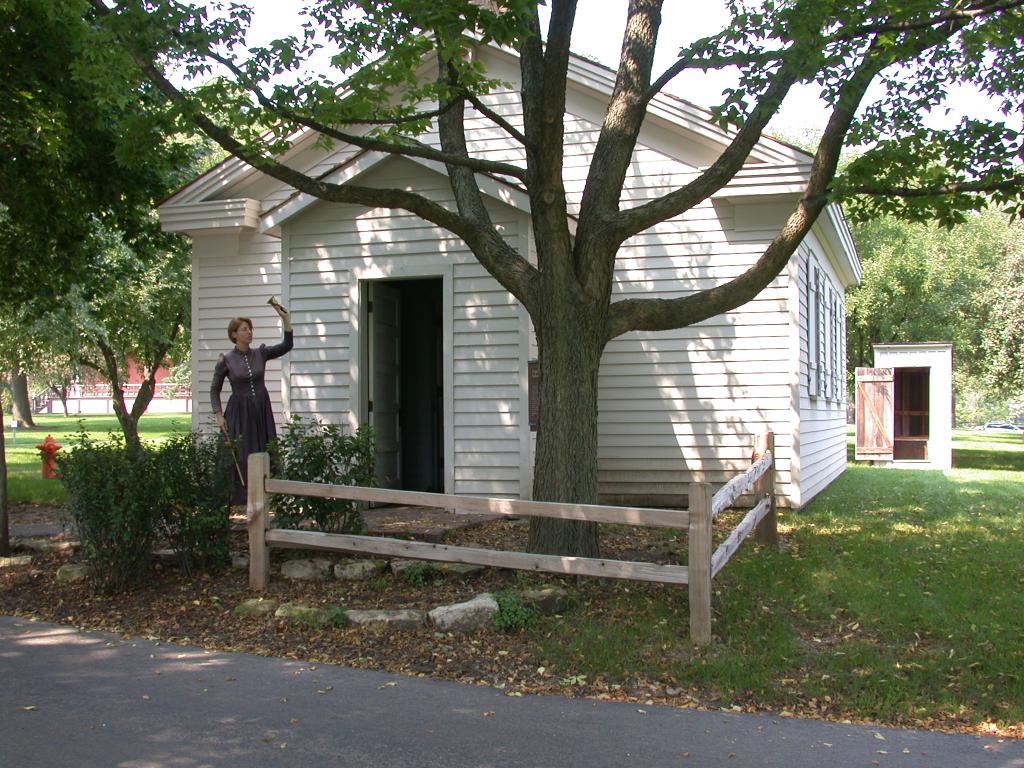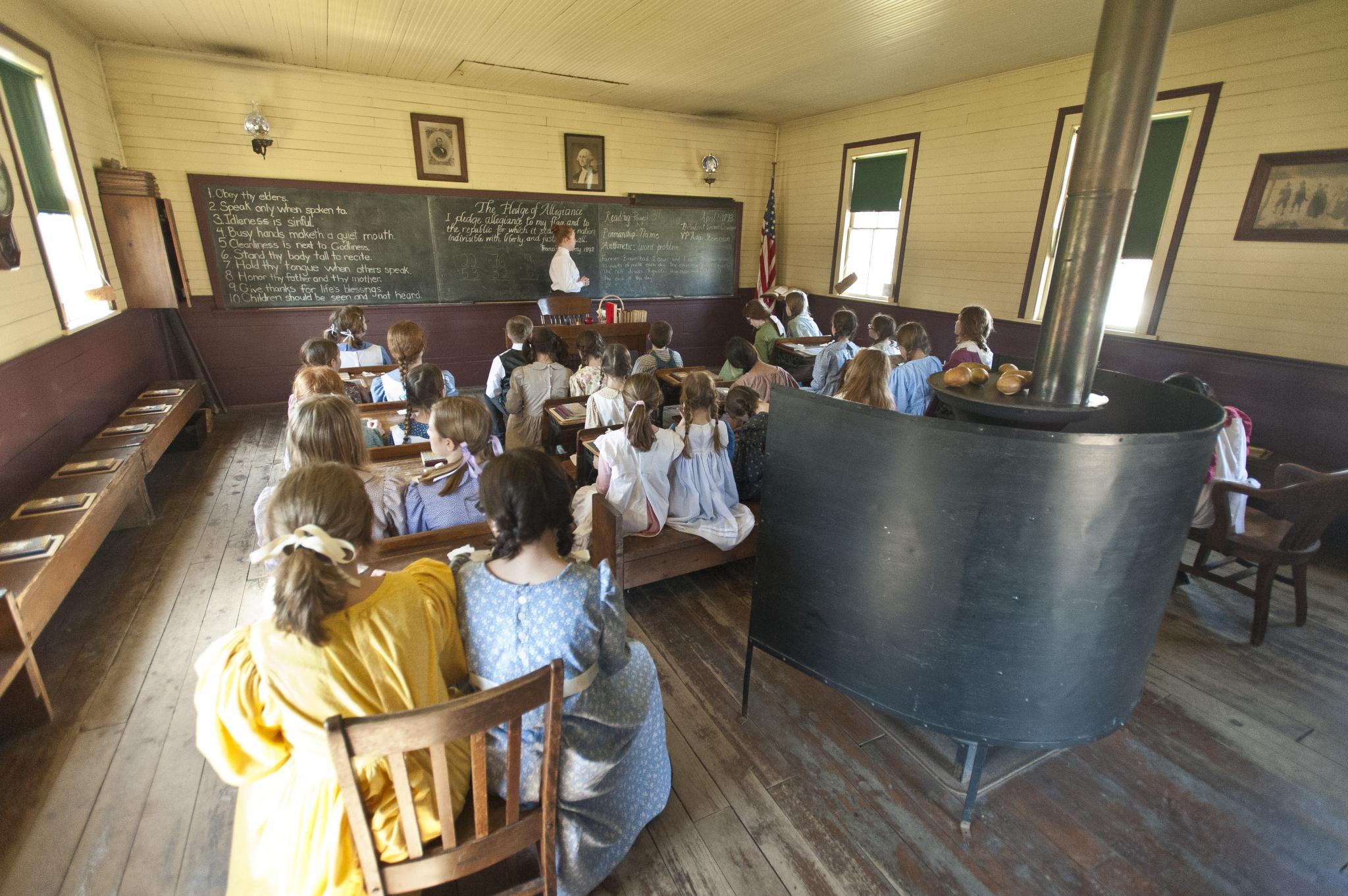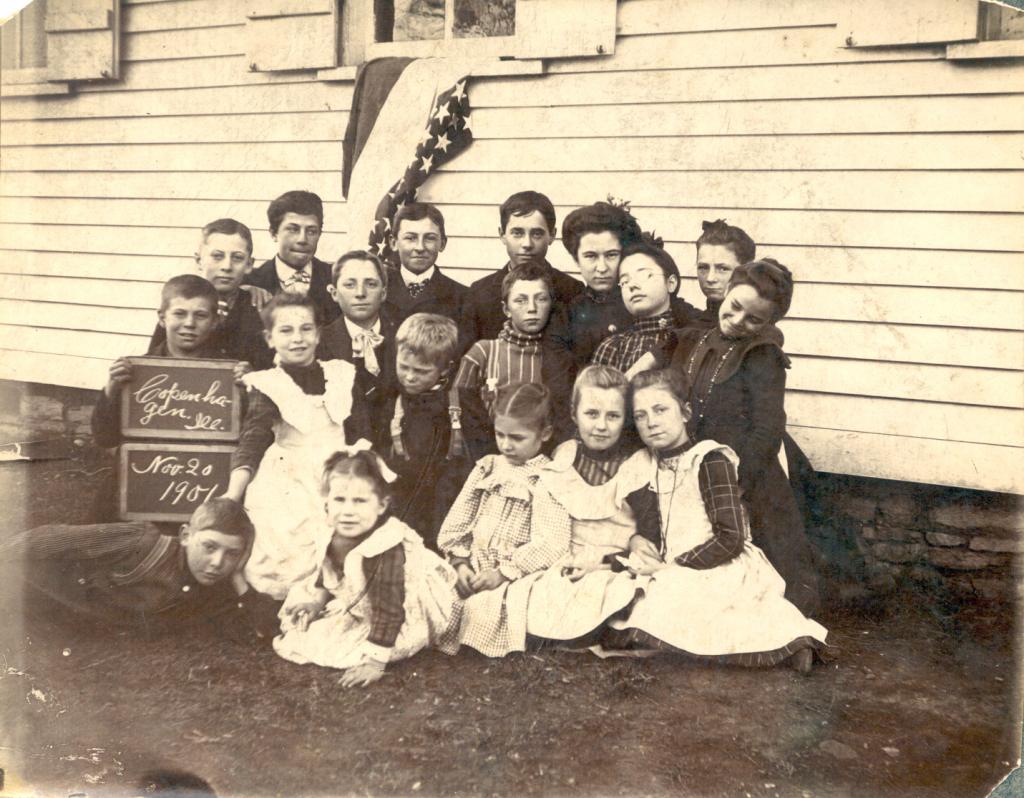
Copenhagen Schoolhouse

Interior of Copenhagen Schoolhouse

Copenhagen School class, 1901
By the 1840s, a community called Copenhagen Corners developed south of Naper’s Settlement, and it was there that local farmers built the clapboard schoolhouse that was the model for this reconstruction. Many of the original materials were salvaged—you can still see the graffiti carved into the siding in a few places. The design is typical of one-room schoolhouses across the country, many of which were built from plans found in widely published pattern books and available to builders even in remote areas. The spread of schoolhouses throughout the settlement must have pleased Joe Naper. Education was a priority in building a solid community, so he wasted no time in establishing a school. Within three months of arriving in Illinois, Naper and his brother John had built a sawmill, a trading post and had organized with neighboring settler Willard Scott to build a log schoolhouse. They hired Lester Peet as schoolmaster for the sum of twelve dollars a month. Forty-five years later, Judge Hiram Cody praised the number of Naperville schools as a bench mark of progress: “We have exchanged the log schoolhouses of 1831 for two magnificent colleges, two theological seminaries and for high school and free schools of easy access to every child within our limits.”